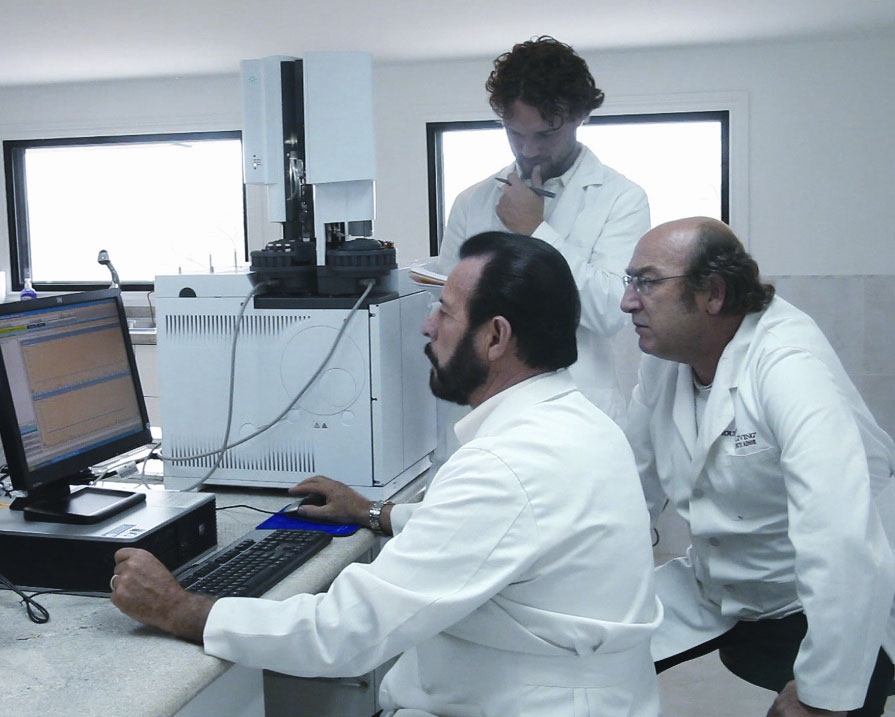Chemists & Their Synthetic Essential Oils

Gary operating the GC-MS with world chromatography expert, Dr. Herve Casabianca, and YL’s Chris Packer in the Guayaquil, Ecuador laboratory.
These manipulators will take certain constituents like citronellol from geranium, citronellal from Eucalyptus citriodora and Citrus hystrix and they’ll put that that in a low-grade rose oil because it’s much, much cheaper, pennies on the dollar, and they can sell that rose oil for a higher price. Or they will add synthetic linalyl acetate and linalol to inexpensive lavandin oil to structure it to look like lavender. Then they will label it lavender and sell it at lavender’s higher price.
These substandard oils enter the marketplace simply because of the lower cost. And that’s how they get there. They have a greater appeal to the marketer, who then sells them to the unknowing public. These oils are sold as perfume oils in household goods, cleaning supplies, and cosmetics.
There are different ways to manufacture adulterated oils, which are very difficult to detect. In fact, can you detect them on a GC/MS? Yes and no. What do I mean by yes and no?
When you run an oil through a GC/MS, it does not tell you if a phenol is synthetic or natural. It doesn’t tell you if bornyl acetate is synthetic or natural. It doesn’t tell you if linalyl acetate is synthetic or natural. All it does is show you how much of it is there. Only a very well-trained analytical chemist can look at the compounds and go, “Wow, that percentage ratio is not right. Something is wrong.” But if you don’t have an analytical chemist who knows how to look at that GC/MS printout and know what those ratios should be, he won’t know it could be adulterated.
Step No. 2. If that analytical chemist does not have the right instrumentation in his laboratory, he cannot analyze essential oils efficiently. One cannot analyze essential oils efficiently—let me emphasize this—one cannot analyze essential oils efficiently with a single 30‑meter column. In my GC in Ecuador, I have two 50‑meter columns and a 60‑meter for analysis. There is one 50 and one 60 just for the GC and one 50 meter dedicated that goes straight to the MS. We have one of the most sophisticated instruments that exists for analytical analysis of essential oils in the world today.

